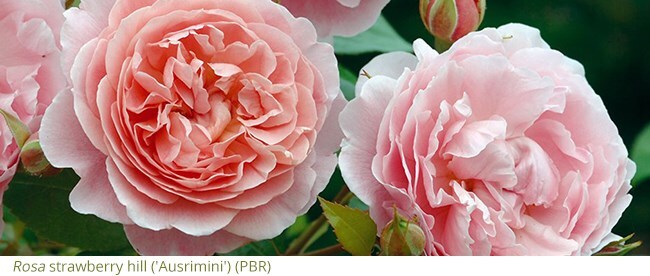
The rose has been the nation’s favourite flower for centuries, prized for their fragrant blooms that make June the dreamiest month of the year. However late-autumn and winter, when these sleeping beauties are having their long rest, is the best time to plant. Then when spring arrives and reawakens them they will hardly have noticed being moved from pot to ground.
Lifting of roses in the autumn
Our roses are grown by specialist growers in open fields and then are dug up when the weather conditions are right in October or November. We plunge these bare root plants into pots to help keep the roots hydrated and in good condition, so they won’t have rooted through into the pots when they are delivered, but this is quite normal practice.
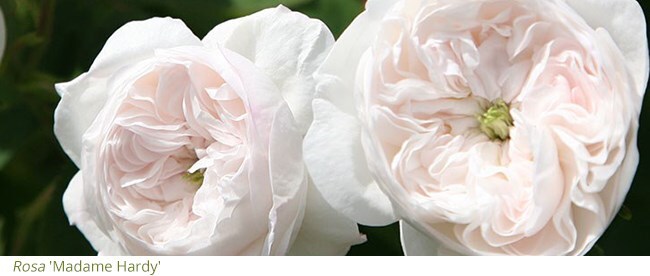
Where to plant
Roses are versatile plants liking a moist, fertile rich soil, with most importantly, sun. Generally roses will need at least 4 hours of sunshine a day to flower. Even roses that will tolerate a north-facing aspect in dappled, or partial shade will still need some sunshine to grow strong, healthy and flower.
Choose a site with space for your beauty to grow and flourish. If you squish it into a small area with lots of other plants it will be competing for moisture, nutrients and sun, so give it a chance to get going without having to fight for survival.
Plant in Good Weather
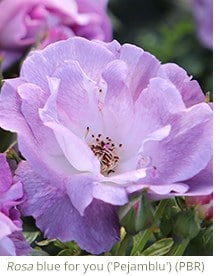 The golden rule is as soon as your roses arrive, if the weather allows, is to get them planted while they are dormant between November and early March. Roses are tough, but even they won’t like to be plunged into an icy or waterlogged soil so prepare the ground before you plant or even before you order them, and then cover the ground with either bubble wrap, cardboard, an old carpet or anything else that will prevent frost penetrating the ground. If this is an impossibility and your roses happen to arrive in hard weather and you haven’t prepared the soil, bide your time and keep them against the house wall, watering then if needed until the frost and cold retreat. They will not mind at all. The golden rule is as soon as your roses arrive, if the weather allows, is to get them planted while they are dormant between November and early March. Roses are tough, but even they won’t like to be plunged into an icy or waterlogged soil so prepare the ground before you plant or even before you order them, and then cover the ground with either bubble wrap, cardboard, an old carpet or anything else that will prevent frost penetrating the ground. If this is an impossibility and your roses happen to arrive in hard weather and you haven’t prepared the soil, bide your time and keep them against the house wall, watering then if needed until the frost and cold retreat. They will not mind at all.
Preparing the soil before planting
When dealing with dormant plants they must always be planted in well-prepared soil. Roses are quite deep-rooted plants so dig a deep hole roughly twice as wide as the plants roots and mix in a generous amount of composted organic matter or garden compost. Make sure there’s still plenty of soil in your planting mixture as you backfill.
When your rose arrives and you remove it from the pot, probably the compost will fall away from the roots, this is quite normal so just add this compost to the planting hole. Carefully tease out any roots and don’t be afraid to trim the odd one if they seem over long. Then spread the roots and look for the bud union on the stem, a bumpy area. Position this at soil level by laying a cane on the ground at either side of your hole. We recommend adding Rootgrow, a mycorrhizal fungi to encourage better root development at this stage, then gently backfill the hole and press the soil down lightly. In windier gardens it’s a good idea to trim back the newly planted rose stems, to three or four inches. This will prevent wind rock, which is a side to side movement that prevents a new rose from rooting properly. A top-dressing of a general purpose fertiliser such as can be worked into the surrounding soil, and water well.
Planting Close to a Tree
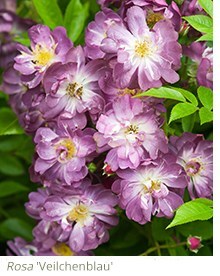 When planting against a large tree, dig a hole about a metre away from the trunk and angle the rose towards the trunk. The tree must be mature and strong enough to take the weight of the rose. Or you can train the rose up to the crown of branches, using wooden supports. In this case the rose should be planted on the outer reaches of the tree's canopy. Allow it to scramble up the supports and then into your chosen tree. Keep all roses well-watered in their first growing season. When planting against a large tree, dig a hole about a metre away from the trunk and angle the rose towards the trunk. The tree must be mature and strong enough to take the weight of the rose. Or you can train the rose up to the crown of branches, using wooden supports. In this case the rose should be planted on the outer reaches of the tree's canopy. Allow it to scramble up the supports and then into your chosen tree. Keep all roses well-watered in their first growing season.
General pruning advice
Mature roses are generally pruned in early February, after the worst of the winter is over, using good secateurs like Felco no. 2’s or no. 6’s. Pruning, just like planting, must only be done in good weather. Generally floribundas are cut back to 45cm. Hybrid teas are cut back to the lowest outward-facing buds - about 15cm usually. However old-fashioned roses and shrub roses, including David Austin English roses, need a gentler treatment. Usually a third of each leader is cut away.
Keeping your rose healthy

Clearing up fallen leaves in autumn and winter will help to prevent 'black spot' (a common fungal disease), because the spores can overwinter in them, as well as in the fissures or cracks on the plants stems. However, it's much less likely to strike if your rose is well-fed and well-pruned. When pruning aim for an open shape, rather than a congested one, so that the air can flow freely through the branches. Feed your roses as soon as spring arrives, using Vitax Q4 or Organic rose and shrub plant food with Mycorrhiza. Both of these are high in potash, helping to produce tougher foliage and more flower buds. Or if you have used Rootgrow when planting then the follow-on treatment Empathy after plant rose food will complement this encouraging soil fertility and stimulate healthy growth.
Finally applying a mulch of well composted farmyard manure in the spring will help to keep moisture in the soil, but be careful not to have it touching the woody stems.
Which roses to choose
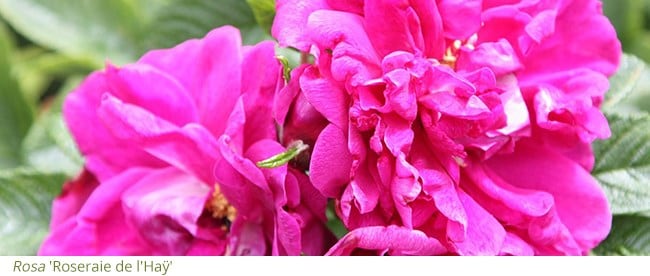
Some of the strongest and toughest roses are the Rugosas, which are bred from a shrubby Japanese species found naturally on poor, sandy soil. These thrive in most gardens including coastal locations where they can be buffeted by winds and rain, although lime-rich soil will produce yellow, chlorotic foliage. One of the oldest and finest, ‘Roseraie de L'Haÿ’ was named after a notable French rose garden of the same name. The serrated foliage is a rich-green, darker than most rugosa, and the almost double purple-pink flowers appear from May onwards, but don’t expect many hips. The semi-double white, ‘Blanche Double de Coubert’, makes an excellent hedge but again there are few red hips. Light pruning in spring is best, because rugosas tend to get some dieback following cold winters.
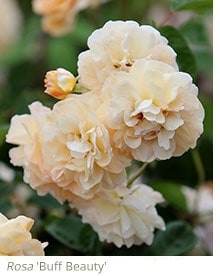 Health and vigour are also a quality found in the Reverend Pemberton’s Hybrid Musks. These roses, bred between 1924 and 1939, are garden classics and they flower well in July and then again in late-summer and autumn. They are all fragrant and healthy. The classic ‘Buff Beauty’ (1939 ) is out of the Pemberton stable being introduced by Ann Bentall, the widow of Joseph Pemberton’s head gardener. Large trusses of fully double, lightly fragrant, warm-apricot flowers age to sunset-pink against reddish foliage. ‘Buff Beauty’ adores a warm position and it takes a few years to get established - but when it does it’s a show-stopper. Health and vigour are also a quality found in the Reverend Pemberton’s Hybrid Musks. These roses, bred between 1924 and 1939, are garden classics and they flower well in July and then again in late-summer and autumn. They are all fragrant and healthy. The classic ‘Buff Beauty’ (1939 ) is out of the Pemberton stable being introduced by Ann Bentall, the widow of Joseph Pemberton’s head gardener. Large trusses of fully double, lightly fragrant, warm-apricot flowers age to sunset-pink against reddish foliage. ‘Buff Beauty’ adores a warm position and it takes a few years to get established - but when it does it’s a show-stopper.

Modern roses are generally bred to be repeat-flowering with a main flush in June, followed by further flowers throughout the season. These roses ration their flowers with five to six weeks between flushes, finishing with a late flourish in October, or even November. All repeat-flowering roses need deadheading regularly to encourage more bloom. They also need feeding, both before (in early spring) and after their first flush, to keep them healthy and floriferous - Vitax Q4 is good as it is easy to sprinkle on and long-lasting with lots of flower-boosting potash.
Once and only-flowering roses are glorious in June, before fading away for good. However their branches drip with masses of flower for two or three weeks, adding great glory to the summer garden. Every gardener should aspire to plant a few for this reason, but there is no point in deadheading or feeding them after flowering because their work is done for the year. Just feed them once a year in early spring, just as the roses begin to grow.
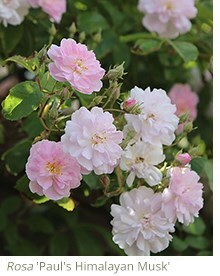 Rambling roses are nearly always once and only flowering, producing new growth from the base every year. Many are vigorous and capable of scrambling into a mature tree, or covering a building given five or so years. ‘Paul’s Himalayan Musk’ could be mistaken for apple blossom from a distance, with its soft-pink sprays of double rosettes rising above small sea-green leaves. It has a graceful habit of cascading downwards, so this musk-scented rose is an excellent addition. The double flowers last for four weeks at least, and this rose is expansive but not overwhelming. 'Albéric Barbier'is a really vigorous rampant rambler, so be warned. This creamy-white rose has gorgeous fully double, slightly scented flowers in June/July, often giving you a second flush later in the summer. However what sets this rose apart is that it is almost evergreen so the deep green, glossy leaves are great for covering an unsightly garage wall or fence. Rambling roses are nearly always once and only flowering, producing new growth from the base every year. Many are vigorous and capable of scrambling into a mature tree, or covering a building given five or so years. ‘Paul’s Himalayan Musk’ could be mistaken for apple blossom from a distance, with its soft-pink sprays of double rosettes rising above small sea-green leaves. It has a graceful habit of cascading downwards, so this musk-scented rose is an excellent addition. The double flowers last for four weeks at least, and this rose is expansive but not overwhelming. 'Albéric Barbier'is a really vigorous rampant rambler, so be warned. This creamy-white rose has gorgeous fully double, slightly scented flowers in June/July, often giving you a second flush later in the summer. However what sets this rose apart is that it is almost evergreen so the deep green, glossy leaves are great for covering an unsightly garage wall or fence.
The pretty ‘Veilchenblau' is less feisty. It has many clusters of small cupped semi-double flowers in a dark magenta, occasionally with white-streaks, and a distinctive central boss of yellow stamen. The light fresh orange scented flowers mature to a bluish-lilac, before fading to lilac-grey. Glorious when planted on light stone walls in a sunny position, where it will turn almost purple - a unique colour in rambling roses. Finally 'Albertine' is always a popular and reliable rose, with clusters of fabulously fruity scented, light salmon-pink double blooms in June and July. A bushy rose which is ideal for growing over an arch or a sunny wall where you can catch the heady scent.
Climbing and ‘Pillar’ roses
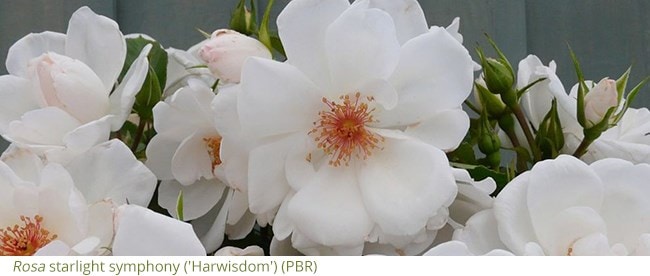
Many climbing roses have over-large flowers on leggy stems, due to their old-fashioned Hybrid Tea blood. Their pliable stems are ideal for winding around a pillar before the new growth hardens, usually in October and November. This slows the sap and helps produce more flowers. The following roses are not leggy monsters that need to be viewed from the bedroom window. ‘New Dawn’ (technically a repeat-flowering Rambler) is very healthy with perfectly-formed silver-pink flowers and neat, healthy foliage, while 'Climbing Iceberg' is a tremendously popular reliable repeat flowering form, with masses of mid-green leaves that offset the slightly fragrant, creamy or pure white flowers sprays beautifully. A lot of David Austin roses can also be used as pillar roses too, including ‘The Pilgrim’ with its beautiful soft yellow flat rosette flowers with an outer ring of pale lemon-white petals, and the glowing-pink ‘Gertrude Jekyll’.
If something more vigorous is needed for a north-facing position follow Vita Sackville-West’s advice and plant the versatile Noisette rose 'Madame Alfred Carrière'. It’s in many rose buffs ‘Top Ten’ and can be grown anywhere. The foliage is shiny and healthy, the easily-trained stems are smooth and thornless, and the blush-white roses begin in June and linger on towards Christmas.
Finally the Rose of the Year 2019 is ‘Starlight Symphony’ winning this prestigious award due to it resistance to disease and its ability to flower prolifically and repeatedly throughout the season. This climber has masses of pure white flowers with pale pink- tinged stamens and a light spicy scent. These simple single flowers are perfect for the bees and pollinating insects in your garden.
Ground Cover
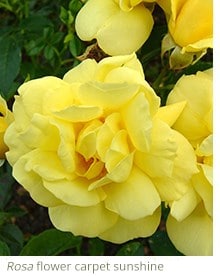 It might sound odd but it is worth considering planting ramblers on a steep bank for ground cover so that they tumble downwards. Alternatively you may consider the low-growing Flower Carpet roses, which are good at covering rough ground and need little maintenance other than a yearly trim with a strimmer. This sounds harsh, but it works. ‘Flower Carpet Sunshine’ is a good choice, or plant the Country Series which includes the white ‘Kent’, or the frilly pink ‘Surrey’. Flower Carpet and the Country Series are both grown in RHS Wisley’s Rose Garden, so don’t dismiss them just because they’re low-growing ground cover. They’re prolific and strong, but gentle on the eye and worthy of a space in any garden.. It might sound odd but it is worth considering planting ramblers on a steep bank for ground cover so that they tumble downwards. Alternatively you may consider the low-growing Flower Carpet roses, which are good at covering rough ground and need little maintenance other than a yearly trim with a strimmer. This sounds harsh, but it works. ‘Flower Carpet Sunshine’ is a good choice, or plant the Country Series which includes the white ‘Kent’, or the frilly pink ‘Surrey’. Flower Carpet and the Country Series are both grown in RHS Wisley’s Rose Garden, so don’t dismiss them just because they’re low-growing ground cover. They’re prolific and strong, but gentle on the eye and worthy of a space in any garden..
|














